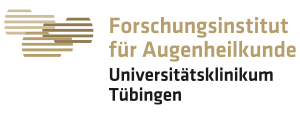Vision is one of the most important senses for many animals as well as for humans. However, the retina of the eye has not been fully researched to date. In particular, the amacrine cells still puzzle researchers. These special neurons are cross-connected with the other neuronal layers of the retina and form the main class of inhibitory cells. More than 60 types of amacrine cells are now known from the mouse retina - they differ, for example, in their appearance, function and circuitry. They are particularly challenging for modeling because their activity is difficult to measure and their function can only be deduced from their interconnection in the network.
To better understand their role, Philipp Berens and his team are developing a new type of models in their ERC project "Next generation mechanistic models of retinal interneurons"(NextMechMod). Models have always played an important role in the history of research on information processing in the nervous system. Alan Lloyd Hodgkin and Andrew Fielding Huxley received the Nobel Prize in Medicine in 1963 for their biophysical model of ionic currents during excitation and inhibition at the nerve cell membrane, presented in 1952. This model, while very detailed, is difficult to adapt to measured data. This is easier for statistical models, but these lack the connection to biological reality.
To exploit the respective strengths, Berens wants to develop a new generation of a hybrid mechanistic model that combines the different model levels. To do this, he is taking advantage of the latest advances in machine learning and computational neuroscience. His team is working closely with collaborators to realistically design the models by using data obtained from imaging techniques and genetics methods. In doing so, he hopes to develop a toolbox to decipher the role of amacrine cells during the natural processing of visual information. A better understanding of the healthy eye's functions may form the basis for new therapies for eye diseases.
Philipp Berens studied bioinformatics and philosophy at the University of Tübingen, where he also received his PhD in 2013. After his time as a postdoc at the Bernstein Center for Computational Neuroscience, he joined the Tübingen Institute for Ophthalmic Research as a research group leader in 2016. There, he was appointed in 2018 to a Heisenberg Professorship for "Data Science for Vision Research" funded by the German Research Foundation. Together with Professor Ulrike von Luxburg, Philipp Berens heads the Cluster of Excellence "Machine Learning: New Perspectives for Science". He is a member of the Tübingen AI Center.
Contact:
Prof. Dr. Philipp Berens
University Hospital Tübingen
Institute for Ophthalmic Research
Phone +49 7071 29-88833
philipp.berens@uni-tuebingen.de
Information in German:



